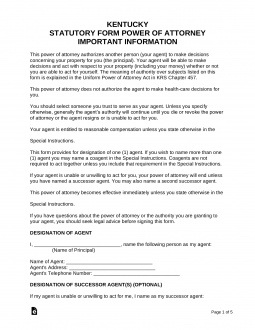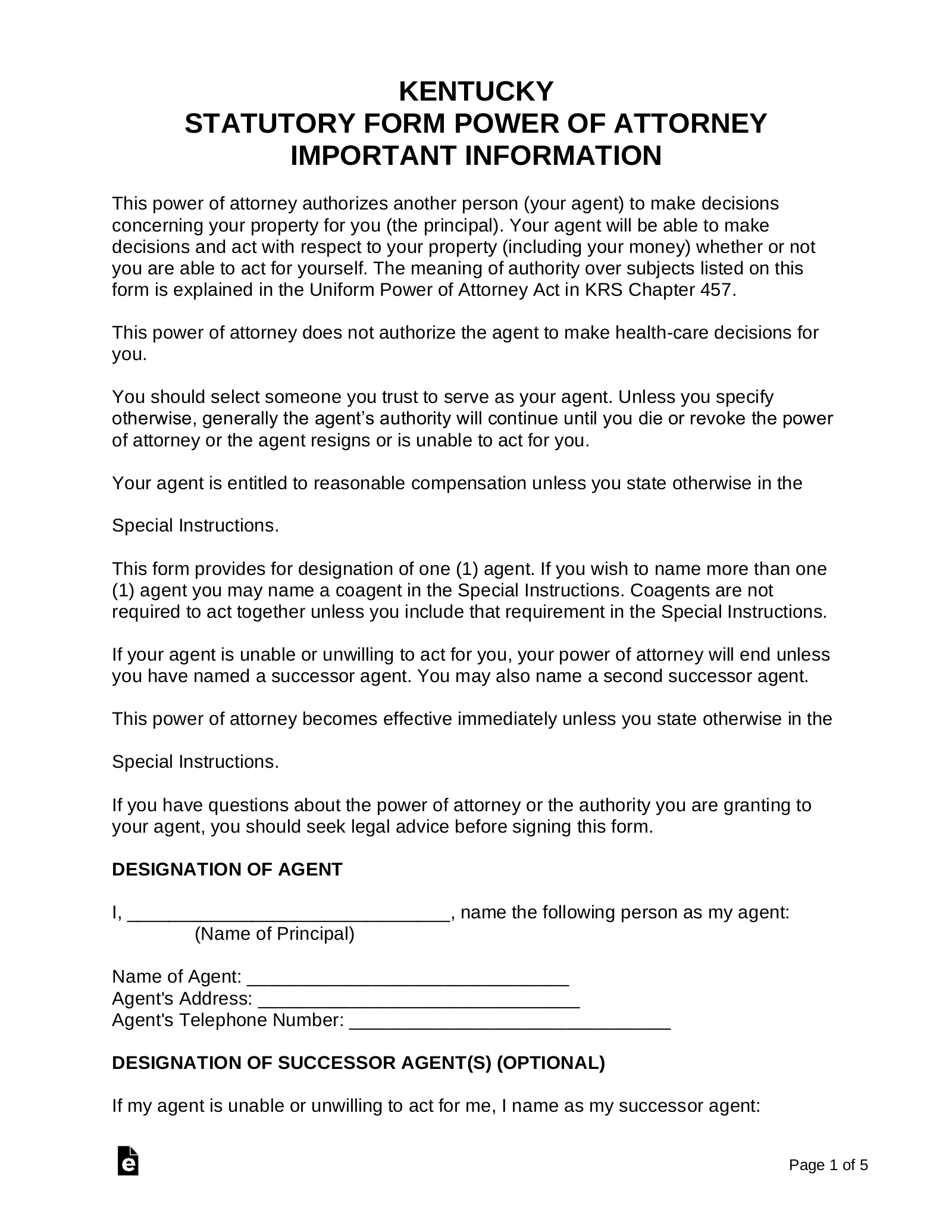Updated August 11, 2023
A Kentucky power of attorney lets a person transfer authority to another individual to manage and transact their business or medical affairs. These types of forms can be useful if a person is expecting to be unavailable for a period of time, has a transaction that they would like someone else to handle for them, or wants the protection of someone by their side making medical decisions if they’re not able. It is important that the person chosen to accept authority is someone who is trusted.
By Type (9) |
 Advance Directive – This type allows you to choose an agent to represent your healthcare interests. Combines a medical power of attorney and a living will. Advance Directive – This type allows you to choose an agent to represent your healthcare interests. Combines a medical power of attorney and a living will.
Download: PDF Signing Requirements (§ 311.625): Two (2) witnesses or a notary acknowledgment. |
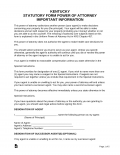 Durable (Statutory) Power of Attorney – The durable form allows a person to convey financial authority to another. Such power continues, unless revoked, even after the principal is declared incompetent. Durable (Statutory) Power of Attorney – The durable form allows a person to convey financial authority to another. Such power continues, unless revoked, even after the principal is declared incompetent.
Download: PDF, MS Word, OpenDocument Signing Requirements (§ 457.050): Notary public. |
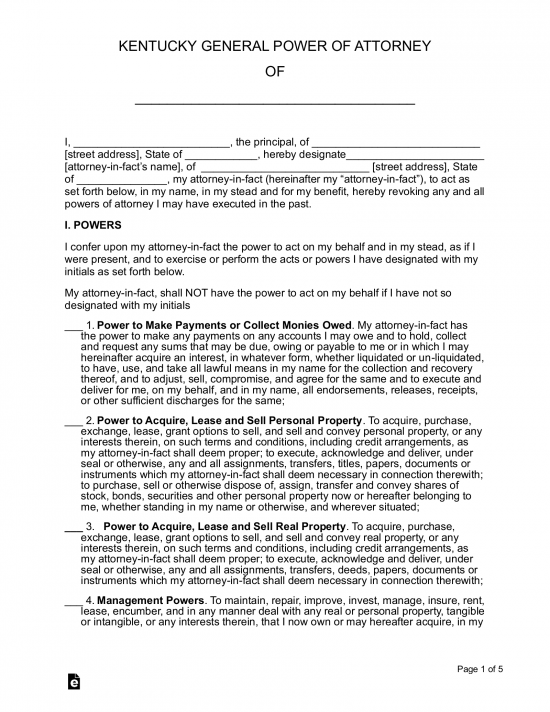 General (Financial) Power of Attorney – This form is similar to a durable POA, but it becomes void if the principal is declared incompetent. General (Financial) Power of Attorney – This form is similar to a durable POA, but it becomes void if the principal is declared incompetent.
Download: PDF, MS Word, OpenDocument Signing Requirements (§ 457.050): Two (2) witnesses and a notary public. |
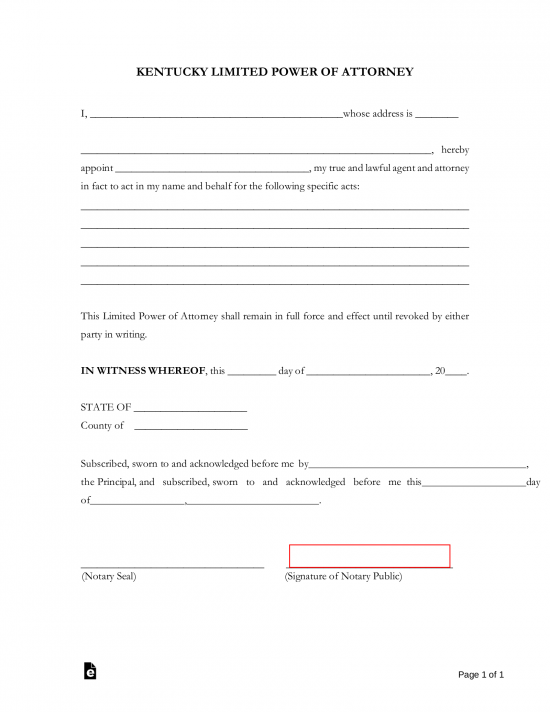 Limited Power of Attorney – The limited form is used for specific transactions or time periods. Limited Power of Attorney – The limited form is used for specific transactions or time periods.
Download: PDF, MS Word, OpenDocument Signing Requirements (§ 457.050): Two (2) witnesses and a notary public. |
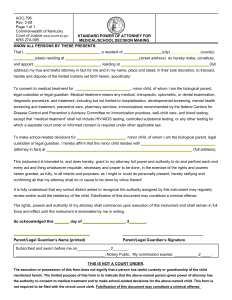 Minor (Child) Power of Attorney – In the event that you may be away from your children, this type allows you to designate a caretaker for them while you are unavailable. Minor (Child) Power of Attorney – In the event that you may be away from your children, this type allows you to designate a caretaker for them while you are unavailable.
Download: PDF Signing Requirements (§ 27A.095 and see form): Notary public. |
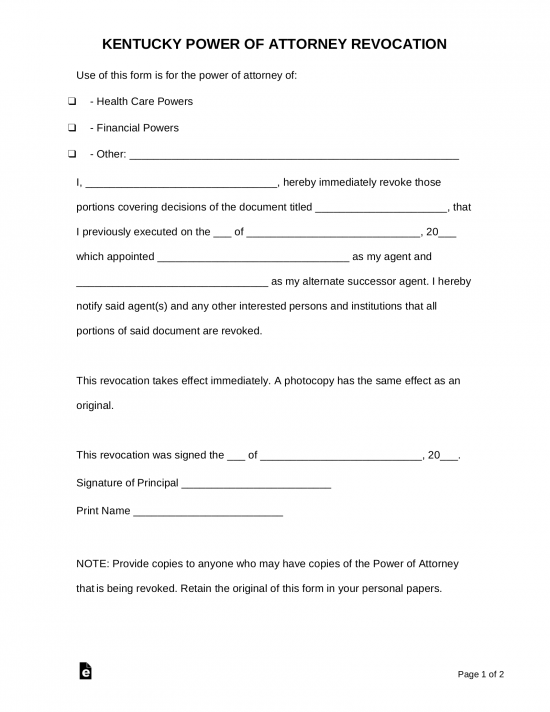 Revocation of Power of Attorney – You can use a revocation form to revoke any type of power of attorney. Revocation of Power of Attorney – You can use a revocation form to revoke any type of power of attorney.
Download: PDF, MS Word, OpenDocument Signing Requirements: Not specifically mentioned, but should be signed in the same manner as the original power of attorney. |
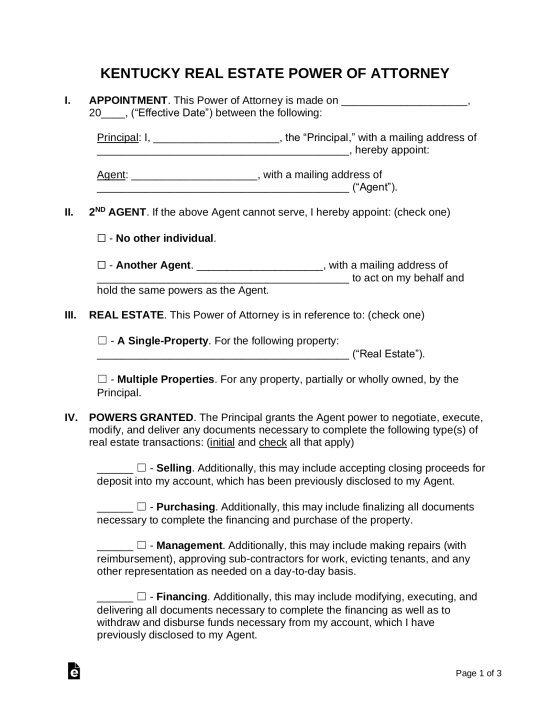 Real Estate Power of Attorney – To elect a representative to handle the purchase, sale, or management of real property for a period of time or until the owner’s death. Real Estate Power of Attorney – To elect a representative to handle the purchase, sale, or management of real property for a period of time or until the owner’s death.
Download: PDF, MS Word, OpenDocument Signing Requirements (§ 457.050): Notary public. |
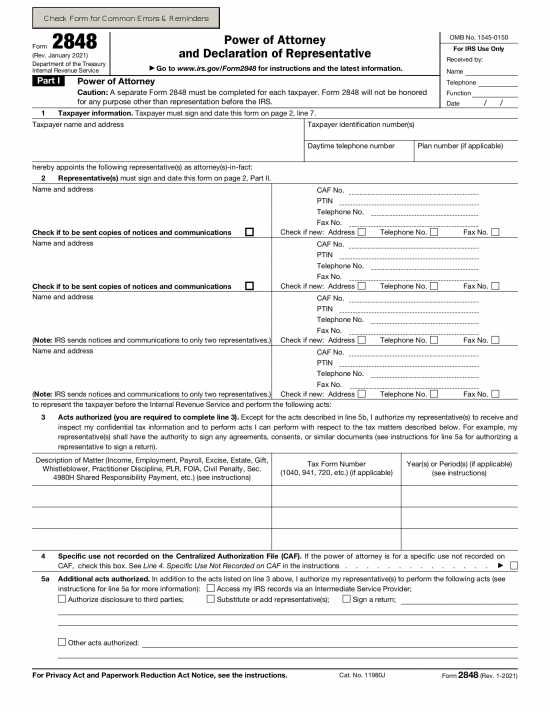 Tax Power of Attorney – This allows you to designate a person to represent you with the tax authority. The State of Kentucky recognizes the Federal Tax Form 2848 for all power of attorney tax purposes. Tax Power of Attorney – This allows you to designate a person to represent you with the tax authority. The State of Kentucky recognizes the Federal Tax Form 2848 for all power of attorney tax purposes.
Download: PDF Signing Requirements (§ 457.050): Principal. |
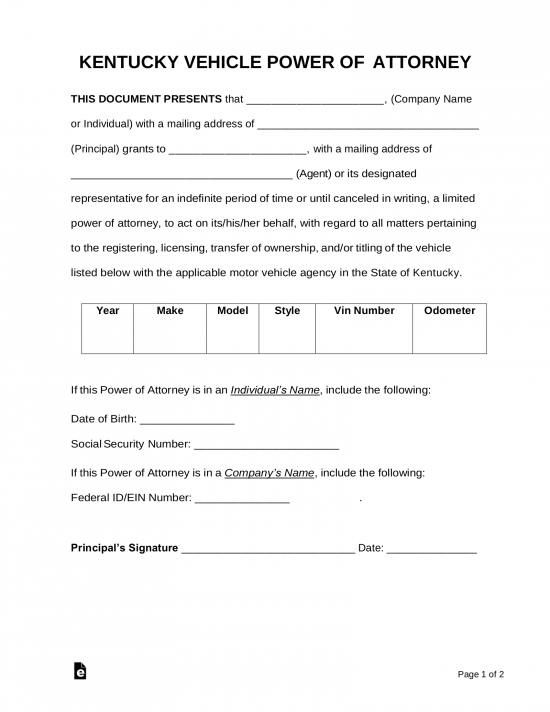 Vehicle Power of Attorney – In the event that you need someone to help you with motor vehicle issues, this form lets you designate someone to do that. Vehicle Power of Attorney – In the event that you need someone to help you with motor vehicle issues, this form lets you designate someone to do that.
Download: PDF, MS Word, OpenDocument Signing Requirements: Notary public. |

